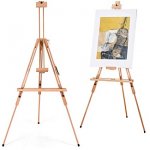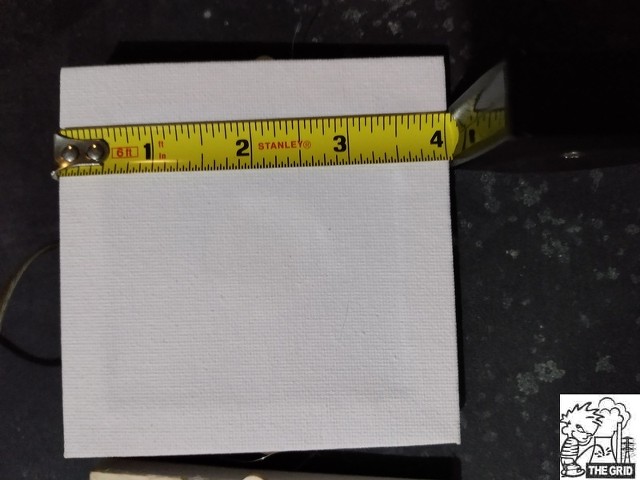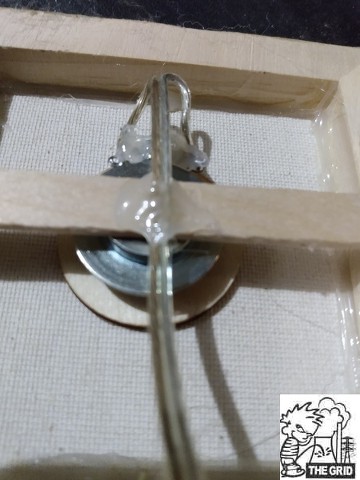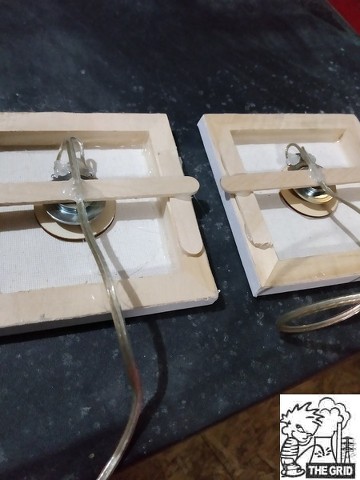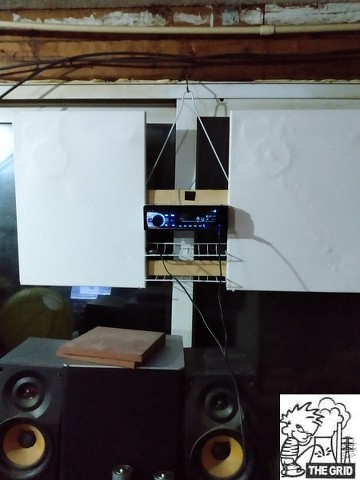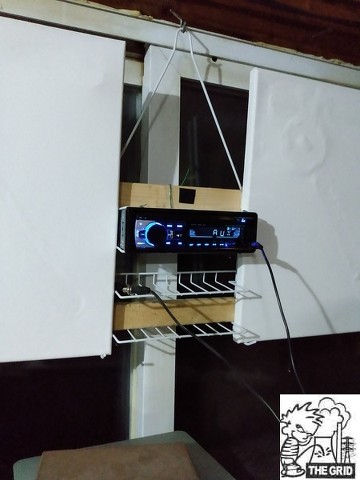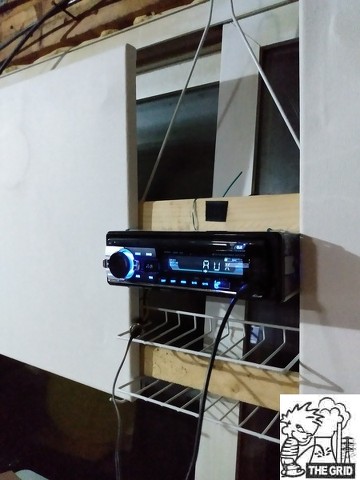Well, this thread has certainly changed direction and disrupted my thinking and planning. Guess I will lurk around and see how these framed canvas dml panels turns out compared to the mainstream EPS/XPS/Plywood panels. Fascinating hobby and I love it. Pity my wife does not understand or share my excitement.
A custom frame with lag screws for adjustments of drum tension might be good. The canvas is normally pretreated with gesso already. It adds some mass and damping.
Then you can ask what would say, a Kevlar/carbon fiber fabric cover (not resin impregnated) would sound like. Or maybe all sorts of natural cloth fibers like silk or cotton or linen?
This could be a whole new breed of drum based speakers. Sort of like how a banjo is different than a guitar.
Then you can ask what would say, a Kevlar/carbon fiber fabric cover (not resin impregnated) would sound like. Or maybe all sorts of natural cloth fibers like silk or cotton or linen?
This could be a whole new breed of drum based speakers. Sort of like how a banjo is different than a guitar.
For the engineers out there I found this Drum mode formula for rectangular diaphragms
Rectangular Membranes
And the Wolfram site has a simulator which you can download
Vibration of a Rectangular Membrane - Wolfram Demonstrations Project
but I think it’s going to be easier to build a rig like xrk971 and pelanj suggest so you can tweak the diaphragm tension and derive the optimum result by trial.
Rectangular Membranes
And the Wolfram site has a simulator which you can download
Vibration of a Rectangular Membrane - Wolfram Demonstrations Project
but I think it’s going to be easier to build a rig like xrk971 and pelanj suggest so you can tweak the diaphragm tension and derive the optimum result by trial.
And there is a useful patent here by one of the originators of the Highwood version of this technology. Audio speaker
Understood. With ESL’s the method was combined with damping. The principle as I understand it is to use the efficiency gain at resonance to boost output at low frequencies a bit like the way a bass reflex cabinet does the same for a dynamic driver. Damping would lower the peak of any resonance. I am not sure you can avoid resonance on a taught diaphragm. My ESL’s have a natural resonance which you can hear when you tap the stators ( unenergised). They are all slightly different due to minor tension differences and of course the bias may add some damping as well. I would imagine the canvas is very lossy so it may not be a problem compared to Mylar and other films.
This latest subject in this thread is simply fascinating. We've been re-decorating our living room, and I mentioned this approach for speakers for our TV to my wife. The idea was an instant success 
OffGridKindaGuy, would you happen to have any sound demos of your experiments?
With the 3.25" diameter discs, what wood did you use, and what exciter did you choose?
I can honestly say that (in this household at least) there hasn't been a loudspeaker project with more WAF! Thanks for sharing your work!
OffGridKindaGuy, would you happen to have any sound demos of your experiments?
With the 3.25" diameter discs, what wood did you use, and what exciter did you choose?
I can honestly say that (in this household at least) there hasn't been a loudspeaker project with more WAF! Thanks for sharing your work!
Overnight Sensation..
I wouldn't be afraid to try a little larger disc.
The exciters I used were old units I had used in several different experiments in the past. The units below are about the closest match to them. Actually, the units in the link may be better..
Dayton Audio DAEX25 Sound Exciter Pair
I don't have any sound links to listen to but I will assure you that this idea is the best sounding combination that I have encountered! I've been experimenting with exciters for a good while and I've tried most every idea around but this approach has astounded me! I haven't discovered any "Perfect" combination yet but I'ma workin' it..
If you want to play, here's some materials. This combo will work with the above exciters or similar..
https://www.walmart.com/ip/2-Pack-B...-81c-16ef3680d83f07&athancid=null&athena=true
https://www.walmart.com/ip/WOODNSHO...EARRINGS-WEDDING-PLAQUE-JEWELRY-DIY/392413047
The above exciters have 3 legs used to support the unit. Cut them off and support the exciter with a piece of wood from the back of the exciter to the frame of the canvas. Let the voice coil work freely without supporting any weight or tension against the canvas. The wooden disc will be glued to the canvas so the canvas will be supporting the weight of the disc. The goal is to have the exciter sandwiched between the rear support and the wooden disc without any tension on it..
Lay the canvas face down on a smooth surface. Run a liberal bead of clear silicone sealer around the outer edge of the canvas on the inside where the canvas meets the wooden frame to adhere the canvas to the frame to avoid rattles..
Find the center of the canvas and glue the wooden circle to the canvas. Apply a even coat of the silicone to the circle and press it into position. Run a small bead of the silicone around the outer edge of the wooden circle to be certain that it is connected to the canvas securely! Allow to cure completely.. (Overnight)
Attach the exciter to the center of the wooden circle, being aware of the wiring connections. **Perhaps connect a length of wire to the exciter to avoid connection issues to it after the rear support is installed.**
"Bridge" the rear of the exciter to the frame of the canvas as you choose. Make it substantial enough to avoid inertia losses. Vision a piece of wooden yardstick that will reach both sides of the frame of the canvas across the back of the exciter. There will be a gap between the yardstick and the frame of the canvas. Fill the gap with whatever equally on both sides and avoid putting any pressure on the exciter. Connect the "bridge" to the rear of the exciter with epoxy to assure a solid connection. If you don't trust the sticky tape on the voice coil connection to the wooden circle, use some epoxy there too..
Have Fun!!
I wouldn't be afraid to try a little larger disc.
The exciters I used were old units I had used in several different experiments in the past. The units below are about the closest match to them. Actually, the units in the link may be better..
Dayton Audio DAEX25 Sound Exciter Pair
I don't have any sound links to listen to but I will assure you that this idea is the best sounding combination that I have encountered! I've been experimenting with exciters for a good while and I've tried most every idea around but this approach has astounded me! I haven't discovered any "Perfect" combination yet but I'ma workin' it..
If you want to play, here's some materials. This combo will work with the above exciters or similar..
https://www.walmart.com/ip/2-Pack-B...-81c-16ef3680d83f07&athancid=null&athena=true
https://www.walmart.com/ip/WOODNSHO...EARRINGS-WEDDING-PLAQUE-JEWELRY-DIY/392413047
The above exciters have 3 legs used to support the unit. Cut them off and support the exciter with a piece of wood from the back of the exciter to the frame of the canvas. Let the voice coil work freely without supporting any weight or tension against the canvas. The wooden disc will be glued to the canvas so the canvas will be supporting the weight of the disc. The goal is to have the exciter sandwiched between the rear support and the wooden disc without any tension on it..
Lay the canvas face down on a smooth surface. Run a liberal bead of clear silicone sealer around the outer edge of the canvas on the inside where the canvas meets the wooden frame to adhere the canvas to the frame to avoid rattles..
Find the center of the canvas and glue the wooden circle to the canvas. Apply a even coat of the silicone to the circle and press it into position. Run a small bead of the silicone around the outer edge of the wooden circle to be certain that it is connected to the canvas securely! Allow to cure completely.. (Overnight)
Attach the exciter to the center of the wooden circle, being aware of the wiring connections. **Perhaps connect a length of wire to the exciter to avoid connection issues to it after the rear support is installed.**
"Bridge" the rear of the exciter to the frame of the canvas as you choose. Make it substantial enough to avoid inertia losses. Vision a piece of wooden yardstick that will reach both sides of the frame of the canvas across the back of the exciter. There will be a gap between the yardstick and the frame of the canvas. Fill the gap with whatever equally on both sides and avoid putting any pressure on the exciter. Connect the "bridge" to the rear of the exciter with epoxy to assure a solid connection. If you don't trust the sticky tape on the voice coil connection to the wooden circle, use some epoxy there too..
Have Fun!!
Last edited:
Better deal on the canvas..
https://www.walmart.com/ip/Daler-Ro...ed-Canvas-Pack-2-Piece/21982835?selected=true
https://www.walmart.com/ip/Daler-Ro...ed-Canvas-Pack-2-Piece/21982835?selected=true
I can’t wait to get my canvas frames. So it looks like the cross brace to provide recoil support for the magnet is needed for good bass? Basically serves as the speaker frame/basket.
Yep.. Hold the motor solid and let the VC do its thing..
Hi OffGridKindaGuy,
Could I ask you, or anyone else who has tried this canvas approach, to try something simple for me. Would you be able to wire a pair of your Canvas Speakers out of phase to see if they still image and don't loose sound quality. As I have said previously, I am no expert in the physics of DML's, but if your canvas speakers are acting as DML's there should be very little change in sound quality if your pair is wired out of phase. If there is a marked change in sound (quality), maybe they are more pistonic, like other types of panel speakers. Just interested to know. Thanks.
Could I ask you, or anyone else who has tried this canvas approach, to try something simple for me. Would you be able to wire a pair of your Canvas Speakers out of phase to see if they still image and don't loose sound quality. As I have said previously, I am no expert in the physics of DML's, but if your canvas speakers are acting as DML's there should be very little change in sound quality if your pair is wired out of phase. If there is a marked change in sound (quality), maybe they are more pistonic, like other types of panel speakers. Just interested to know. Thanks.
- Home
- Loudspeakers
- Full Range
- A Study of DMLs as a Full Range Speaker
